TRENDING
Historic Woodstock Festival Photos
Published
2 years agoon
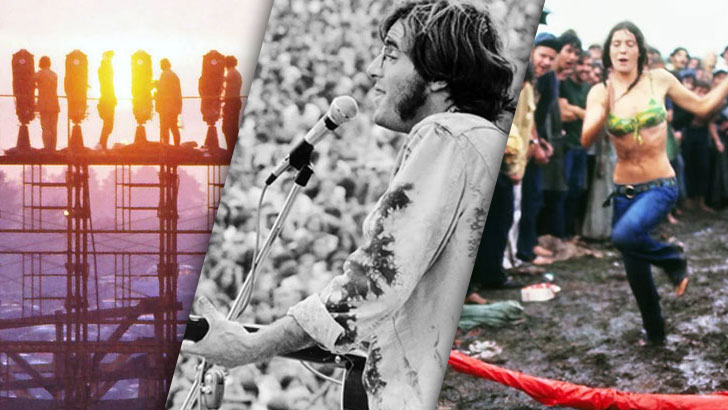 Woodstock became a major cultural event, amplified by news coverage, a popular documentary film, and the music that became symbolic of an era. The festival was marked by a sense of community and harmony, despite the huge crowds, lack of basic amenities, and inclement weather. Many attendees shared food, water, and shelter, and helped one another. Woodstock became a symbol of the counterculture movement, which rejected traditional values and sought to create a new society based on peace, love, and equality. It inspired a generation to embrace social and political change, and left an indelible mark on American culture and music.
Woodstock became a major cultural event, amplified by news coverage, a popular documentary film, and the music that became symbolic of an era. The festival was marked by a sense of community and harmony, despite the huge crowds, lack of basic amenities, and inclement weather. Many attendees shared food, water, and shelter, and helped one another. Woodstock became a symbol of the counterculture movement, which rejected traditional values and sought to create a new society based on peace, love, and equality. It inspired a generation to embrace social and political change, and left an indelible mark on American culture and music.
Crowds Blew Away Expectations
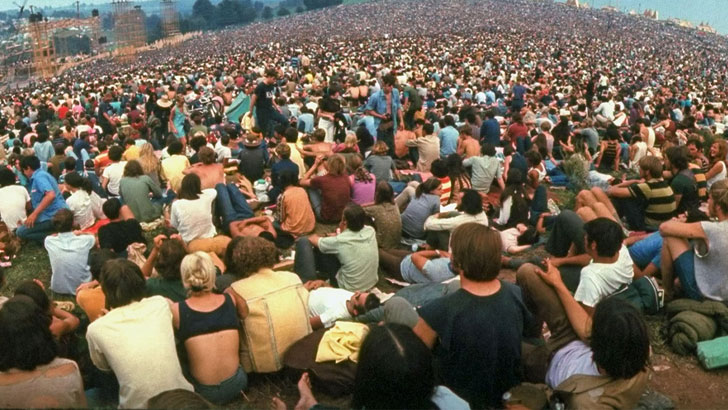 The Woodstock Music & Art Fair, held in August 1969, is often remembered for its massive crowds that descended upon a dairy farm owned by Max and Miriam Yasgur in Bethel, New York. A wide-angle view of the festival grounds reveals a sea of humanity stretching out as far as the eye can see, with hundreds of thousands of people facing the distant stage where 32 acts performed over three days.
The Woodstock Music & Art Fair, held in August 1969, is often remembered for its massive crowds that descended upon a dairy farm owned by Max and Miriam Yasgur in Bethel, New York. A wide-angle view of the festival grounds reveals a sea of humanity stretching out as far as the eye can see, with hundreds of thousands of people facing the distant stage where 32 acts performed over three days.
Crowds Descend
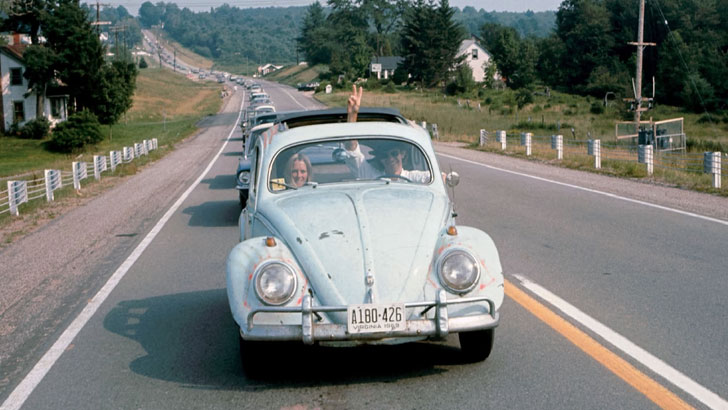 In August 1969, a man in a Volkswagen Beetle led a long line of cars on their way to the Woodstock Music & Art Fair in Bethel, New York. As he drove, he raised his hand through the sunroof of the car, flashing a peace sign to those around him. The image of the man in the Beetle, with his peaceful gesture, encapsulated the spirit of the Woodstock festival.
In August 1969, a man in a Volkswagen Beetle led a long line of cars on their way to the Woodstock Music & Art Fair in Bethel, New York. As he drove, he raised his hand through the sunroof of the car, flashing a peace sign to those around him. The image of the man in the Beetle, with his peaceful gesture, encapsulated the spirit of the Woodstock festival.
Bethel Wasn’t Ready
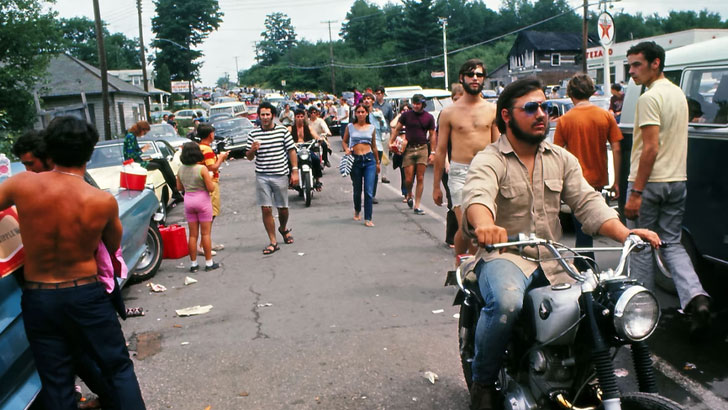 On August 16, 1969, hordes of young people made their way to the Woodstock Music Festival, eagerly anticipating three days of music, art, and cultural celebration. The festival, held on a dairy farm in Bethel, New York, drew a crowd far larger than anticipated, with attendees numbering in the hundreds of thousands.
On August 16, 1969, hordes of young people made their way to the Woodstock Music Festival, eagerly anticipating three days of music, art, and cultural celebration. The festival, held on a dairy farm in Bethel, New York, drew a crowd far larger than anticipated, with attendees numbering in the hundreds of thousands.
Jumping Gates
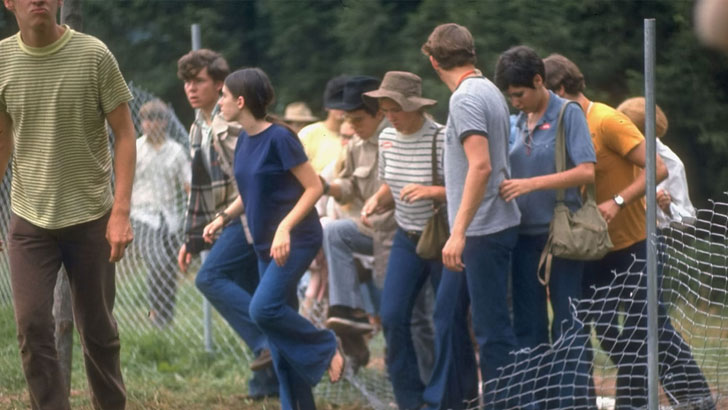 In August 1969, a group of individuals overcame a torn-down fence to enter the Woodstock festival grounds. The image of these individuals stepping over the barrier captures the determination and enthusiasm of the hundreds of thousands of young people who flocked to Bethel, New York to celebrate music, art, and cultural revolution.
In August 1969, a group of individuals overcame a torn-down fence to enter the Woodstock festival grounds. The image of these individuals stepping over the barrier captures the determination and enthusiasm of the hundreds of thousands of young people who flocked to Bethel, New York to celebrate music, art, and cultural revolution.
Six-Wheeler
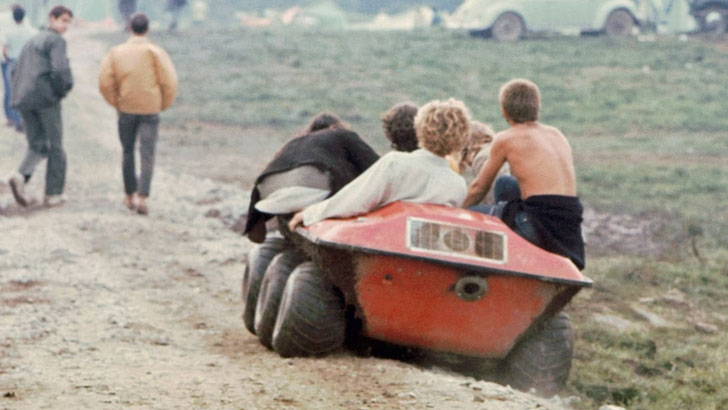 A red six-wheeler traverses down the side of a dirt road leading to the camping area. The rugged and sturdy appearance of the vehicle suggests that it is equipped for rough terrain, potentially serving as a popular mode of transportation for Woodstock festival-goers seeking to navigate the muddy and unpaved conditions of the festival grounds.
A red six-wheeler traverses down the side of a dirt road leading to the camping area. The rugged and sturdy appearance of the vehicle suggests that it is equipped for rough terrain, potentially serving as a popular mode of transportation for Woodstock festival-goers seeking to navigate the muddy and unpaved conditions of the festival grounds.
Feeling The Groove
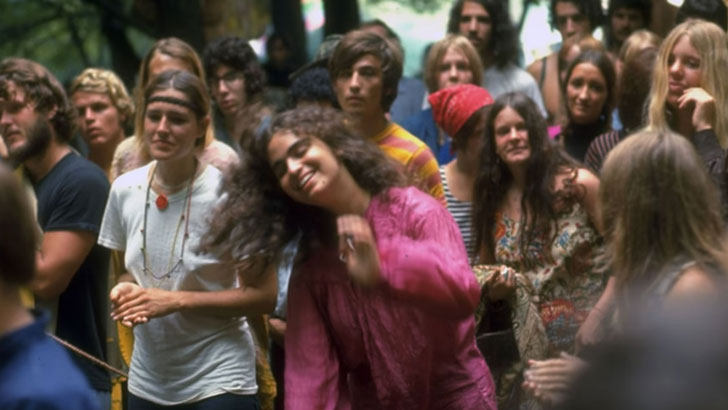 odstock became a symbol of a generation seeking to challenge and change the status quo, and the act of stepping over the fence was a powerful statement of that spirit. Despite the challenges posed by overcrowding, poor weather, and other obstacles, the festival-goers remained undeterred, and the image of the torn-down fence serves as a powerful reminder of the resilience and determination of the Woodstock generation.
odstock became a symbol of a generation seeking to challenge and change the status quo, and the act of stepping over the fence was a powerful statement of that spirit. Despite the challenges posed by overcrowding, poor weather, and other obstacles, the festival-goers remained undeterred, and the image of the torn-down fence serves as a powerful reminder of the resilience and determination of the Woodstock generation.
Man In A Tree
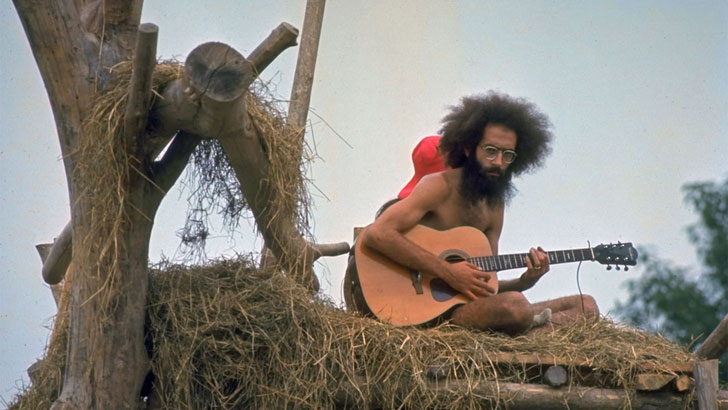 During Woodstock, a man perches atop a treehouse-like platform, strumming his guitar as music and celebration fill the air. The image of the man playing guitar from his elevated vantage point evokes a sense of freedom and creativity, as he performs for the gathered crowds without the constraints of traditional performance spaces.
During Woodstock, a man perches atop a treehouse-like platform, strumming his guitar as music and celebration fill the air. The image of the man playing guitar from his elevated vantage point evokes a sense of freedom and creativity, as he performs for the gathered crowds without the constraints of traditional performance spaces.
Shower Time
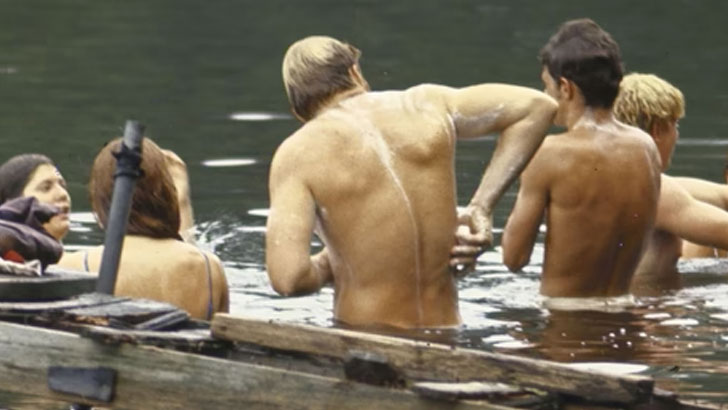 At Woodstock, young men and women revel in the freedom of the festival, stripping off their clothes to skinny-dip in a nearby river. The image captures the spirit of the counterculture movement that defined the era, embracing a more natural and carefree way of life, free from the strictures of mainstream society. The young people embrace their bodies and sexuality, rejecting the traditional values of modesty and restraint.
At Woodstock, young men and women revel in the freedom of the festival, stripping off their clothes to skinny-dip in a nearby river. The image captures the spirit of the counterculture movement that defined the era, embracing a more natural and carefree way of life, free from the strictures of mainstream society. The young people embrace their bodies and sexuality, rejecting the traditional values of modesty and restraint.
Hanging On The Tent
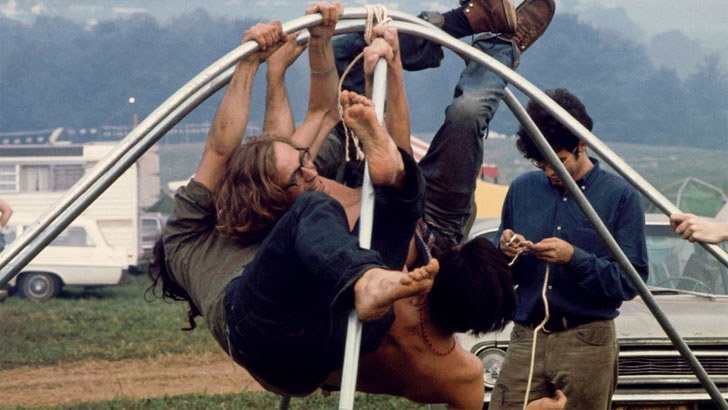 Festival goers at the Woodstock Festival came together to build makeshift tents, using bent metal tubing and rope to construct frames. In the image, one individual untangles the rope while another hangs from the tubing, their faces etched with determination and a sense of shared purpose. This scene reflects the resourcefulness and creativity of the Woodstock generation, who embraced a do-it-yourself ethos and sought to create a sense of community amidst the chaos of the festival.
Festival goers at the Woodstock Festival came together to build makeshift tents, using bent metal tubing and rope to construct frames. In the image, one individual untangles the rope while another hangs from the tubing, their faces etched with determination and a sense of shared purpose. This scene reflects the resourcefulness and creativity of the Woodstock generation, who embraced a do-it-yourself ethos and sought to create a sense of community amidst the chaos of the festival.
Chilling On The Hill
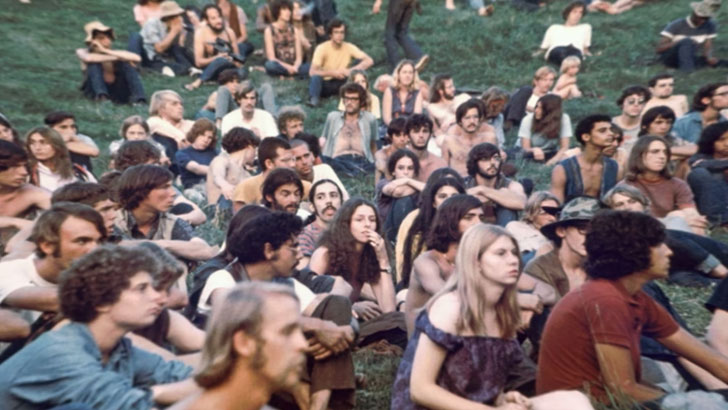 A captivated audience observes a performance at the Woodstock Music & Art Fair. The image captures the electric atmosphere of the festival, with spectators fully immersed in the music and artistry unfolding before them. The diverse range of acts on display at Woodstock drew a massive crowd, united by a shared love of music and a desire for cultural revolution.
A captivated audience observes a performance at the Woodstock Music & Art Fair. The image captures the electric atmosphere of the festival, with spectators fully immersed in the music and artistry unfolding before them. The diverse range of acts on display at Woodstock drew a massive crowd, united by a shared love of music and a desire for cultural revolution.
Santana’s Crowd
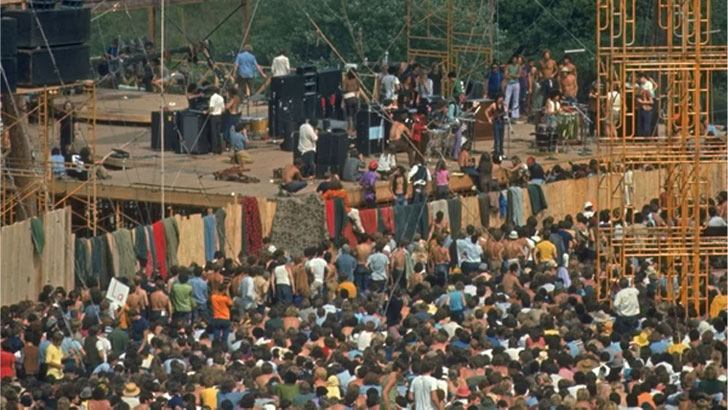 A sea of faces turns towards the stage, enraptured by a performance from the legendary band Santana at the Woodstock Music & Art Fair. The image captures the raw energy and passion of the festival, as music lovers from all walks of life gather together to celebrate a cultural revolution. Santana’s set at Woodstock has since become the stuff of legend, with the band’s electrifying blend of Latin, rock, and jazz inspiring a generation of musicians and cementing their place in music history.
A sea of faces turns towards the stage, enraptured by a performance from the legendary band Santana at the Woodstock Music & Art Fair. The image captures the raw energy and passion of the festival, as music lovers from all walks of life gather together to celebrate a cultural revolution. Santana’s set at Woodstock has since become the stuff of legend, with the band’s electrifying blend of Latin, rock, and jazz inspiring a generation of musicians and cementing their place in music history.
Santana On Stage
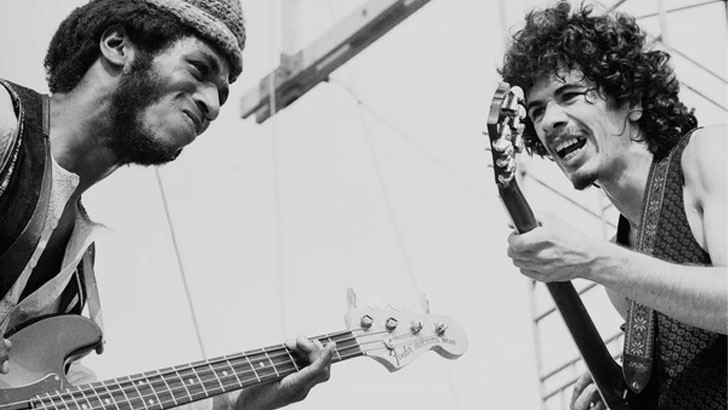 The legendary musician Carlos Santana and bassist David Brown are captured in a moment of musical synergy as they perform with their band at the Woodstock Music & Art Fair on August 16, 1969. The image conveys the power and intensity of Santana’s performance, with the musicians lost in the moment and the crowd electrified by their music.
The legendary musician Carlos Santana and bassist David Brown are captured in a moment of musical synergy as they perform with their band at the Woodstock Music & Art Fair on August 16, 1969. The image conveys the power and intensity of Santana’s performance, with the musicians lost in the moment and the crowd electrified by their music.
Equipment On Scaffolding
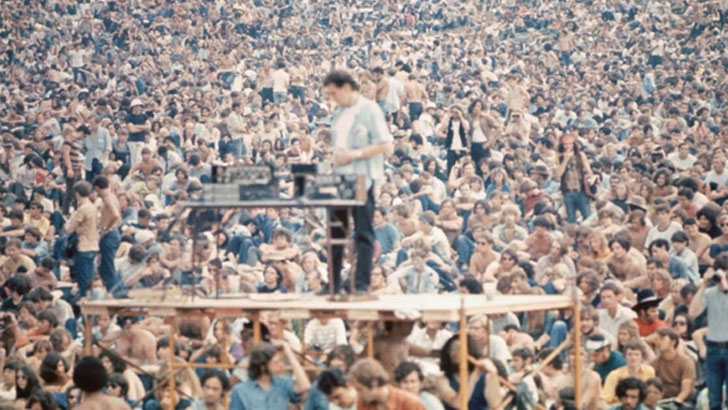 Perched high on a scaffolding, a sound engineer surveys the sea of faces before him at the Woodstock Music & Art Fair. With his equipment arrayed around him, he is focused on the task of delivering the best possible sound to the massive audience gathered below. The image captures the importance of the behind-the-scenes professionals who helped make Woodstock a success, working tirelessly to ensure that the performers’ messages could be heard loud and clear.
Perched high on a scaffolding, a sound engineer surveys the sea of faces before him at the Woodstock Music & Art Fair. With his equipment arrayed around him, he is focused on the task of delivering the best possible sound to the massive audience gathered below. The image captures the importance of the behind-the-scenes professionals who helped make Woodstock a success, working tirelessly to ensure that the performers’ messages could be heard loud and clear.
Girl And Her Monkey
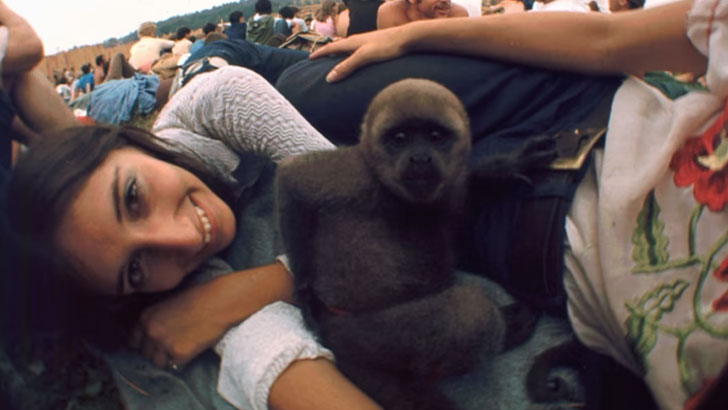 In this snapshot, an unidentified woman smiles broadly as she poses with her group and a curious pet monkey. The playful primate sits calmly in the center of the group, seemingly enjoying the attention of the festival-goers. The image captures the lighthearted and carefree atmosphere of Woodstock, where people from all walks of life could come together to celebrate music, art, and community.
In this snapshot, an unidentified woman smiles broadly as she poses with her group and a curious pet monkey. The playful primate sits calmly in the center of the group, seemingly enjoying the attention of the festival-goers. The image captures the lighthearted and carefree atmosphere of Woodstock, where people from all walks of life could come together to celebrate music, art, and community.
John Sebastian
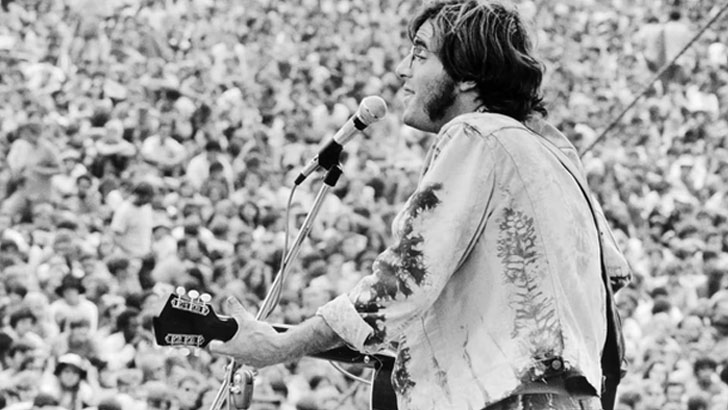 The iconic singer-songwriter John Sebastian graces the stage at the Woodstock Music & Art Fair in August 1969, guitar in hand and a captivated audience before him. With his trademark blend of folk, blues, and rock, Sebastian delivers a powerful performance that resonates with the spirit of the times. The image captures a moment in music history, with Sebastian’s music serving as a soundtrack for the social and cultural upheavals of the era.
The iconic singer-songwriter John Sebastian graces the stage at the Woodstock Music & Art Fair in August 1969, guitar in hand and a captivated audience before him. With his trademark blend of folk, blues, and rock, Sebastian delivers a powerful performance that resonates with the spirit of the times. The image captures a moment in music history, with Sebastian’s music serving as a soundtrack for the social and cultural upheavals of the era.
Man And His Bus
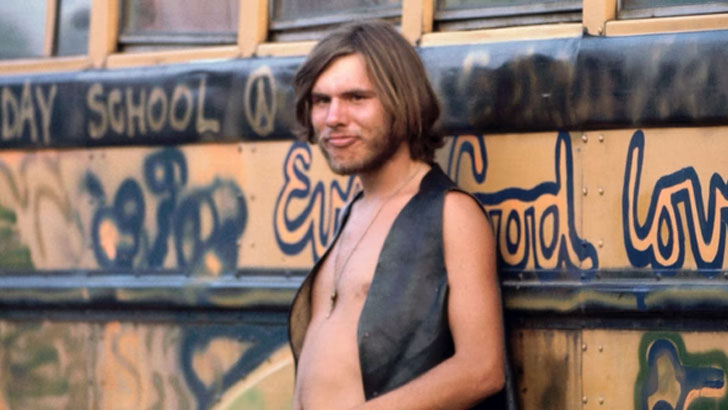 In this striking image, a young man in a leather vest leans against a vibrant school bus that has been decorated by the Hog Farmers, a group tasked with helping to construct, secure, and feed attendees at the Woodstock Music & Arts Fair. With his shirt off and his face twisted in an expression of playful defiance, the young man embodies the free-spirited, rebellious ethos that defined the counterculture movement of the 1960s.
In this striking image, a young man in a leather vest leans against a vibrant school bus that has been decorated by the Hog Farmers, a group tasked with helping to construct, secure, and feed attendees at the Woodstock Music & Arts Fair. With his shirt off and his face twisted in an expression of playful defiance, the young man embodies the free-spirited, rebellious ethos that defined the counterculture movement of the 1960s.
Every Walk Of Life
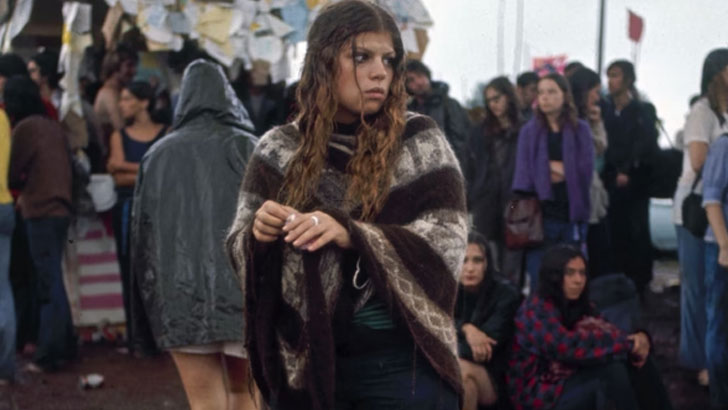 This poignant image captures a bedraggled young woman standing amidst the mud and chaos of the Woodstock Music & Art Fair. Despite the challenging conditions, she stands with a quiet strength, her face conveying a sense of determination and resilience. The mud that surrounds her serves as a symbol of the challenges faced by the festival-goers, who weathered rain, overcrowding, and other obstacles to come together in a spirit of unity and peace.
This poignant image captures a bedraggled young woman standing amidst the mud and chaos of the Woodstock Music & Art Fair. Despite the challenging conditions, she stands with a quiet strength, her face conveying a sense of determination and resilience. The mud that surrounds her serves as a symbol of the challenges faced by the festival-goers, who weathered rain, overcrowding, and other obstacles to come together in a spirit of unity and peace.
Ultimate Dive
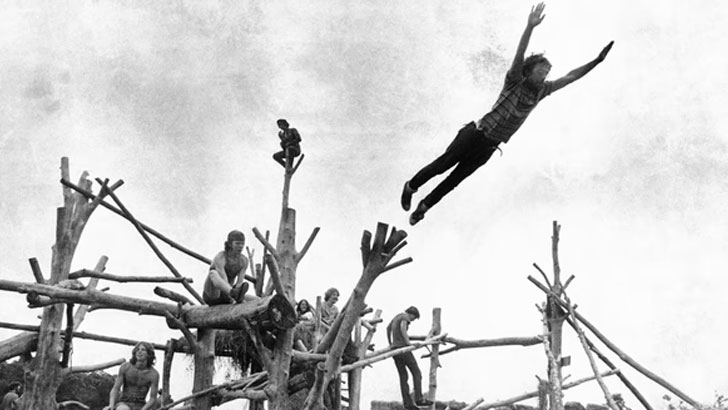 This vivid image captures the exuberant energy of rock-music fans at Woodstock on August 15, 1969. A group of young people sit perched on a tree sculpture, surveying the scene around them with excitement and anticipation. In the foreground, one fan leaps midair onto a pile of hay, a carefree expression on their face as they revel in the freedom and sense of community that characterized the festival.
This vivid image captures the exuberant energy of rock-music fans at Woodstock on August 15, 1969. A group of young people sit perched on a tree sculpture, surveying the scene around them with excitement and anticipation. In the foreground, one fan leaps midair onto a pile of hay, a carefree expression on their face as they revel in the freedom and sense of community that characterized the festival.
Couple In The River
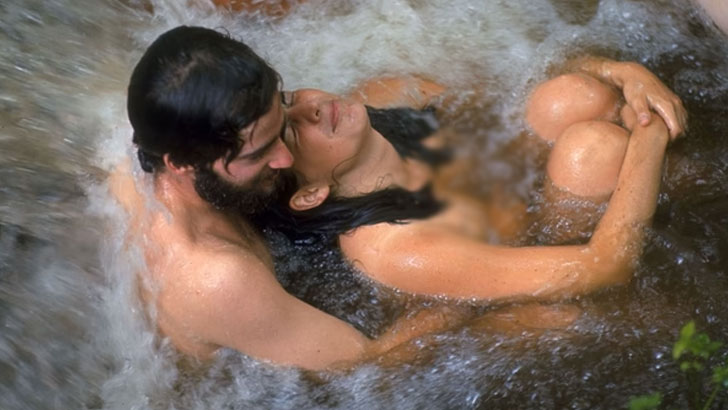 Amidst the natural beauty of Woodstock, a naked couple embraces in a powerful expression of love and freedom. The rushing river around them serves as a powerful symbol of the forces of nature, which both surround and connect them to the world around them. Despite the chaotic and crowded conditions of the festival, this moment of intimacy and connection captures the essence of the counterculture movement, which celebrated the beauty of the natural world and sought to transcend the boundaries of convention and conformity.
Amidst the natural beauty of Woodstock, a naked couple embraces in a powerful expression of love and freedom. The rushing river around them serves as a powerful symbol of the forces of nature, which both surround and connect them to the world around them. Despite the chaotic and crowded conditions of the festival, this moment of intimacy and connection captures the essence of the counterculture movement, which celebrated the beauty of the natural world and sought to transcend the boundaries of convention and conformity.
Nap Time
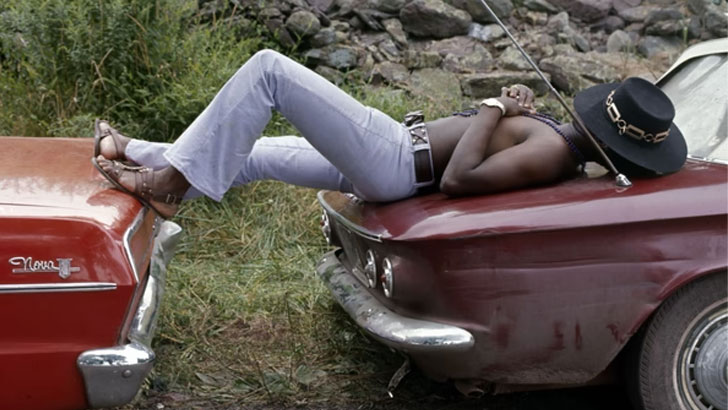 As the Woodstock Music & Art Fair raged on around him, an unidentified shirtless man found a moment of peace and rest, stretching out across the trunks of two parked cars. Exhausted from the chaos and excitement of the festival, he surrendered to sleep, his body relaxed and vulnerable in the midst of the crowded and chaotic scene. Despite the noise and activity surrounding him, he found a moment of quiet stillness, a respite from the sensory overload of the festival.
As the Woodstock Music & Art Fair raged on around him, an unidentified shirtless man found a moment of peace and rest, stretching out across the trunks of two parked cars. Exhausted from the chaos and excitement of the festival, he surrendered to sleep, his body relaxed and vulnerable in the midst of the crowded and chaotic scene. Despite the noise and activity surrounding him, he found a moment of quiet stillness, a respite from the sensory overload of the festival.
Man, Kid, And Cat
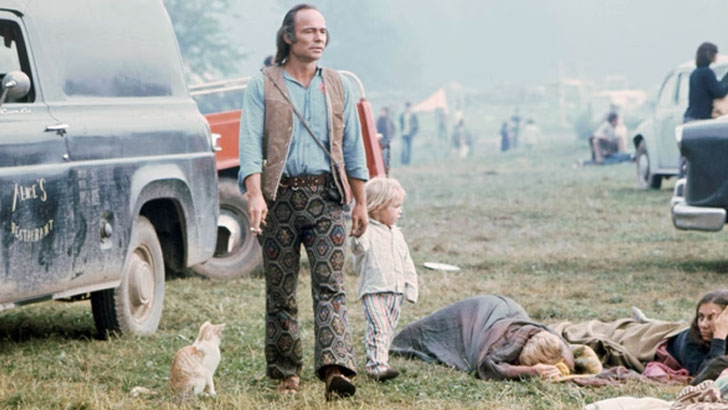 In August 1969, a man and a child made their way through a sea of people sprawled out in sleeping bags, their bodies nestled into the grassy earth. As they walked past, the man and child looked on at the peaceful scene, the quiet breathing of sleeping festivalgoers creating a soft, soothing rhythm. It was a moment of calm amid the chaos of Woodstock, a reminder that even in the midst of a wild and raucous gathering, people could find a sense of peace and connection with one another.
In August 1969, a man and a child made their way through a sea of people sprawled out in sleeping bags, their bodies nestled into the grassy earth. As they walked past, the man and child looked on at the peaceful scene, the quiet breathing of sleeping festivalgoers creating a soft, soothing rhythm. It was a moment of calm amid the chaos of Woodstock, a reminder that even in the midst of a wild and raucous gathering, people could find a sense of peace and connection with one another.
Kids Galore
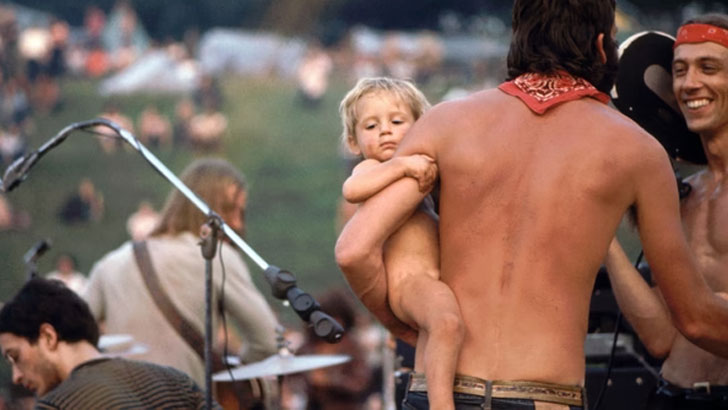 Ken Babbs, a member of the Merry Pranksters, known for their association with author Ken Kesey and the Acid Tests, engages in a conversation with a filmmaker at the Free Stage of Woodstock Music & Art Fair. Babbs was among the many counterculture figures who attended the festival, which drew a crowd of around 400,000 people. The Free Stage was an area that featured impromptu performances by artists and musicians who were not part of the main lineup.
Ken Babbs, a member of the Merry Pranksters, known for their association with author Ken Kesey and the Acid Tests, engages in a conversation with a filmmaker at the Free Stage of Woodstock Music & Art Fair. Babbs was among the many counterculture figures who attended the festival, which drew a crowd of around 400,000 people. The Free Stage was an area that featured impromptu performances by artists and musicians who were not part of the main lineup.
Richie Havens
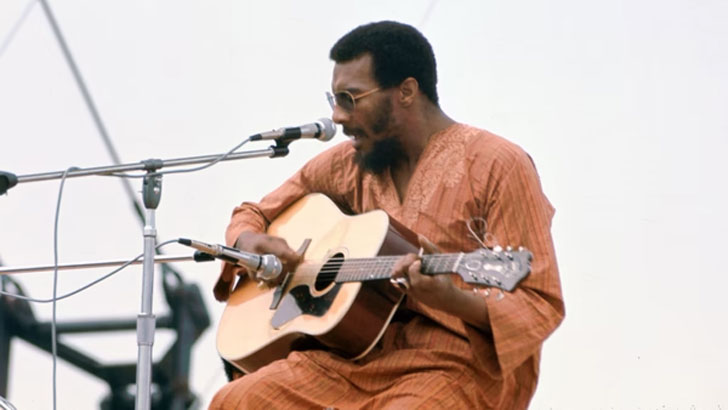 On August 15, 1969, the musician Richie Havens gave an iconic performance at the Woodstock Music & Art Fair. As the opening act of the festival, he played for nearly three hours and was called back for multiple encores. His rendition of the song “Freedom” became one of the defining moments of the festival and a symbol of the counterculture movement.
On August 15, 1969, the musician Richie Havens gave an iconic performance at the Woodstock Music & Art Fair. As the opening act of the festival, he played for nearly three hours and was called back for multiple encores. His rendition of the song “Freedom” became one of the defining moments of the festival and a symbol of the counterculture movement.
Long Exposure Shot
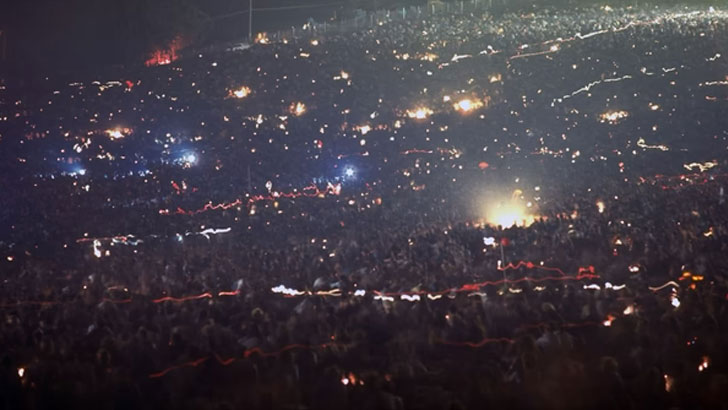 This photo captures the massive crowd gathered at Woodstock at night, illuminated by various sources of light. The blurred movement of people gives a sense of the energy and excitement of the event. It’s impossible to discern individual faces, but the collective energy of the crowd is palpable.
This photo captures the massive crowd gathered at Woodstock at night, illuminated by various sources of light. The blurred movement of people gives a sense of the energy and excitement of the event. It’s impossible to discern individual faces, but the collective energy of the crowd is palpable.
Stage Lights & Setup
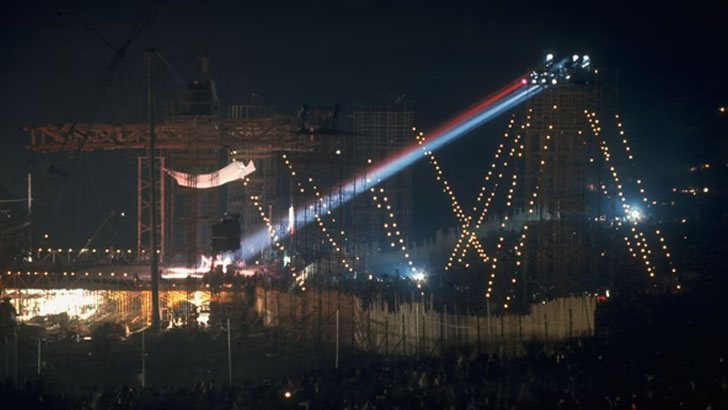 The Woodstock stage is aglow with light as a performer takes the stage, captivating the crowd. The bright lights illuminate the musicians and their instruments, creating a stunning visual spectacle against the dark night sky. The audience members gaze up at the stage in anticipation, eagerly awaiting the start of the performance. The stage lights cast a warm and inviting glow over the entire concert area, beckoning festival-goers to come together and enjoy the music.
The Woodstock stage is aglow with light as a performer takes the stage, captivating the crowd. The bright lights illuminate the musicians and their instruments, creating a stunning visual spectacle against the dark night sky. The audience members gaze up at the stage in anticipation, eagerly awaiting the start of the performance. The stage lights cast a warm and inviting glow over the entire concert area, beckoning festival-goers to come together and enjoy the music.
Ravi Shankar and Alla Rakha
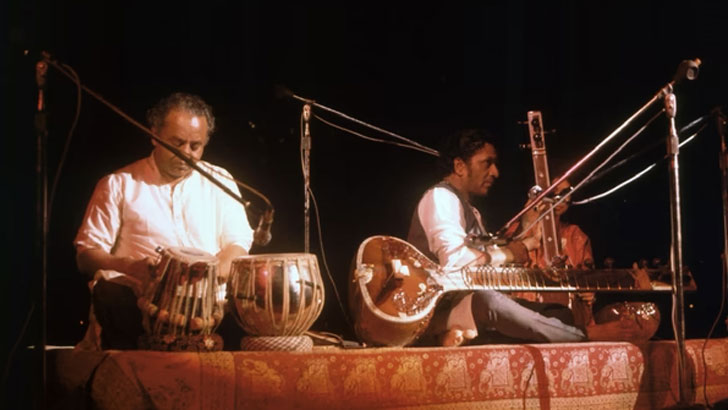 On August 15, 1969, Ravi Shankar and Alla Rakha, two Indian musicians, gave a performance on stage at the Woodstock Music & Art Fair. The duo mesmerized the crowd with their classical Indian music, which was a new and exotic sound to many attendees. The performance by Ravi Shankar and Alla Rakha is considered one of the highlights of the festival and helped introduce Indian classical music to a wider audience in the West.
On August 15, 1969, Ravi Shankar and Alla Rakha, two Indian musicians, gave a performance on stage at the Woodstock Music & Art Fair. The duo mesmerized the crowd with their classical Indian music, which was a new and exotic sound to many attendees. The performance by Ravi Shankar and Alla Rakha is considered one of the highlights of the festival and helped introduce Indian classical music to a wider audience in the West.
Food Options
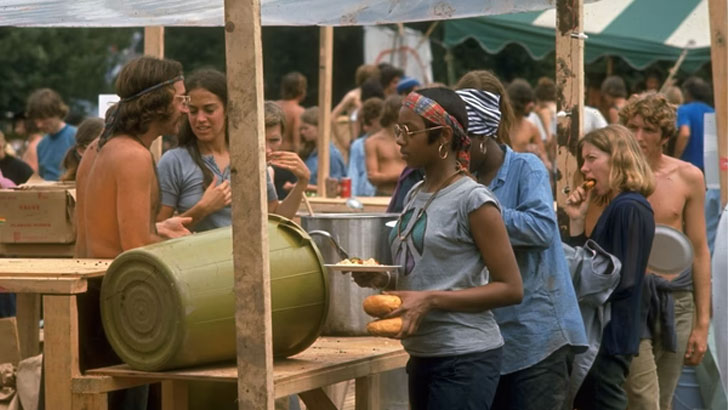 Amidst the Woodstock Music & Art Fair, a group of young people selflessly serve food to others in a long food line. With empathy and compassion, they distribute nourishment to fellow festival-goers, embodying the spirit of community and solidarity that permeated the event. Their actions exemplify the essence of Woodstock, where people came together not only to celebrate music but also to support and care for one another in a time of shared experience and harmony.
Amidst the Woodstock Music & Art Fair, a group of young people selflessly serve food to others in a long food line. With empathy and compassion, they distribute nourishment to fellow festival-goers, embodying the spirit of community and solidarity that permeated the event. Their actions exemplify the essence of Woodstock, where people came together not only to celebrate music but also to support and care for one another in a time of shared experience and harmony.
Sound Mixing
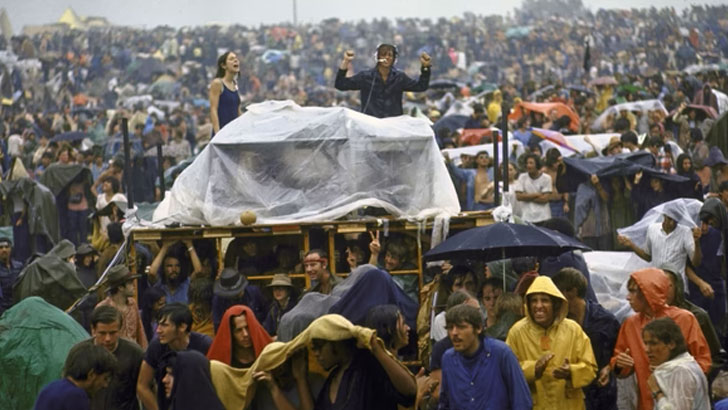 In the pouring rain, Halsey Clifton stands atop the sound-mixing table, surrounded by a massive crowd. Despite the inclement weather, their presence commands attention and captures the collective energy of the moment. With passion and determination, Clifton ensures that the music resonates through the rain-soaked air, unifying the crowd and amplifying the powerful experience of the Woodstock Music & Art Fair.
In the pouring rain, Halsey Clifton stands atop the sound-mixing table, surrounded by a massive crowd. Despite the inclement weather, their presence commands attention and captures the collective energy of the moment. With passion and determination, Clifton ensures that the music resonates through the rain-soaked air, unifying the crowd and amplifying the powerful experience of the Woodstock Music & Art Fair.
Mud Running
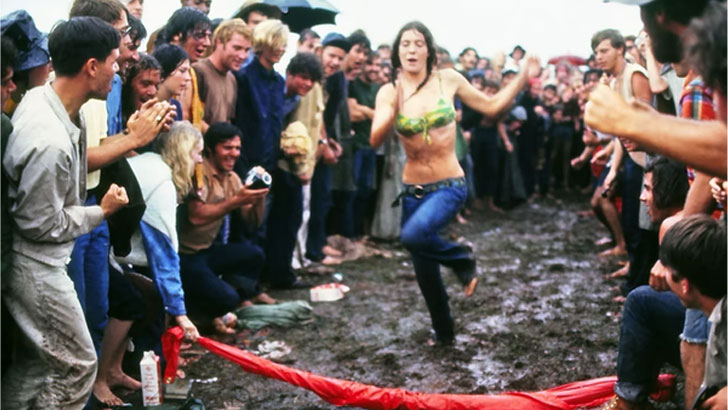 Amidst the muddy terrain of Woodstock on August 17, 1969, a woman fearlessly dashes through the muck. With each step, she embraces the chaos and revels in the liberated spirit of the festival. Her uninhibited run through the mud becomes a symbolic act of freedom, defying societal conventions and embracing the raw and primal connection with nature. In this candid moment, she embodies the free-spirited and adventurous essence of Woodstock.
Amidst the muddy terrain of Woodstock on August 17, 1969, a woman fearlessly dashes through the muck. With each step, she embraces the chaos and revels in the liberated spirit of the festival. Her uninhibited run through the mud becomes a symbolic act of freedom, defying societal conventions and embracing the raw and primal connection with nature. In this candid moment, she embodies the free-spirited and adventurous essence of Woodstock.
Country Joe and The Fish
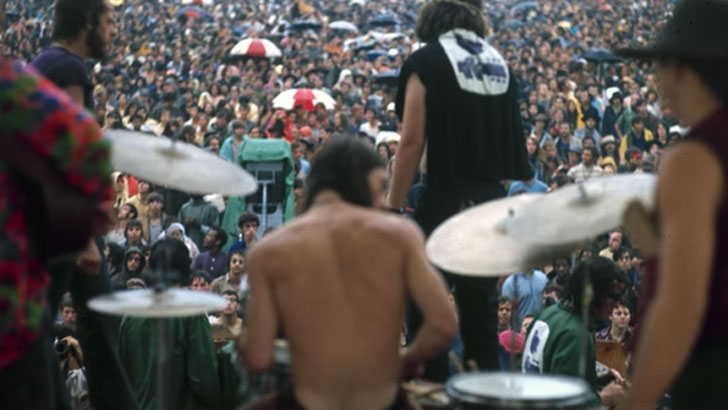 Through the rain-soaked backdrop, a captivating scene unfolds on August 17, 1969, as the rock group Country Joe and the Fish take the stage. From the vantage point at the back of the stage, the view offers a unique perspective on their performance. Raindrops glisten in the stage lights as the band delivers their energetic and spirited music to a dedicated crowd. Despite the inclement weather, their powerful performance carries through, transcending the rain and adding a sense of raw intensity to the Woodstock experience.
Through the rain-soaked backdrop, a captivating scene unfolds on August 17, 1969, as the rock group Country Joe and the Fish take the stage. From the vantage point at the back of the stage, the view offers a unique perspective on their performance. Raindrops glisten in the stage lights as the band delivers their energetic and spirited music to a dedicated crowd. Despite the inclement weather, their powerful performance carries through, transcending the rain and adding a sense of raw intensity to the Woodstock experience.
Trash Amongst Patrons
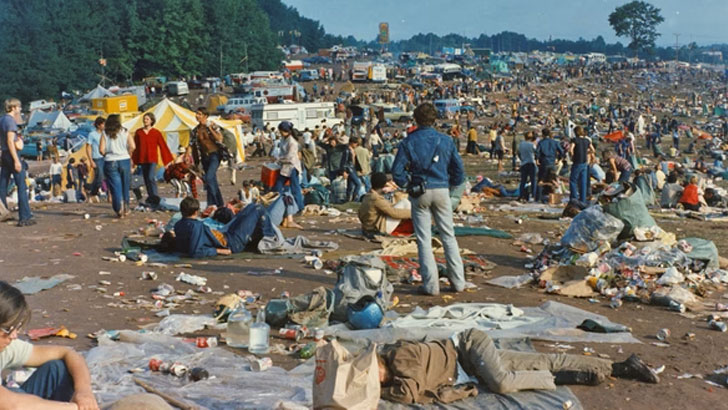 As attendees move around the grounds of the Woodstock Music & Art Fair, a sprawling landscape unfolds, dotted with scattered debris and remnants of the event. The sheer magnitude of the crowd and the three-day duration of the festival have left their mark, resulting in a noticeable amount of trash scattered across the grounds. Amidst the sea of people, makeshift campsites, food wrappers, and discarded belongings serve as reminders of the vibrant and communal experience that took place. It is a testament to the overwhelming scale of the event and the challenges faced in maintaining cleanliness
As attendees move around the grounds of the Woodstock Music & Art Fair, a sprawling landscape unfolds, dotted with scattered debris and remnants of the event. The sheer magnitude of the crowd and the three-day duration of the festival have left their mark, resulting in a noticeable amount of trash scattered across the grounds. Amidst the sea of people, makeshift campsites, food wrappers, and discarded belongings serve as reminders of the vibrant and communal experience that took place. It is a testament to the overwhelming scale of the event and the challenges faced in maintaining cleanliness
Max & Miriam Yasgur
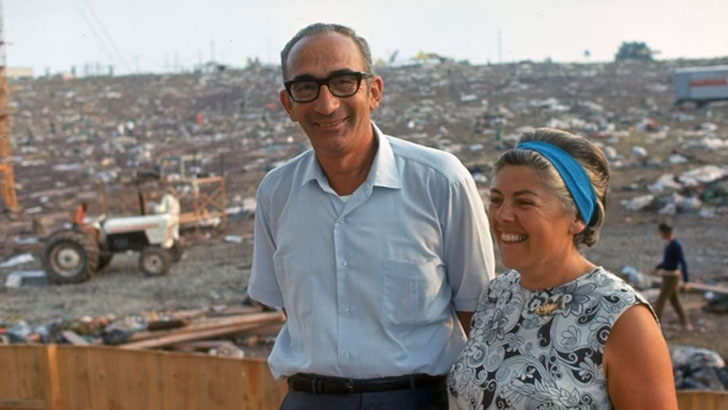 Captured in a photograph, Max and Miriam Yasgur stand before the remnants of the Woodstock Music & Art Fair on their dairy farm. The image portrays them amidst the aftermath, surrounded by scattered trash and debris left behind by the massive crowd of festival-goers. Despite the chaos and the mess, their presence reflects a sense of resilience and acceptance, embodying the spirit of hospitality and openness that defined their decision to host the iconic event. The photograph stands as a testament to the transformative power of Woodstock, as it left an indelible mark not only on the Yasgur’s farm but also on the cultural landscape of the time.
Captured in a photograph, Max and Miriam Yasgur stand before the remnants of the Woodstock Music & Art Fair on their dairy farm. The image portrays them amidst the aftermath, surrounded by scattered trash and debris left behind by the massive crowd of festival-goers. Despite the chaos and the mess, their presence reflects a sense of resilience and acceptance, embodying the spirit of hospitality and openness that defined their decision to host the iconic event. The photograph stands as a testament to the transformative power of Woodstock, as it left an indelible mark not only on the Yasgur’s farm but also on the cultural landscape of the time.
Roadside Crew
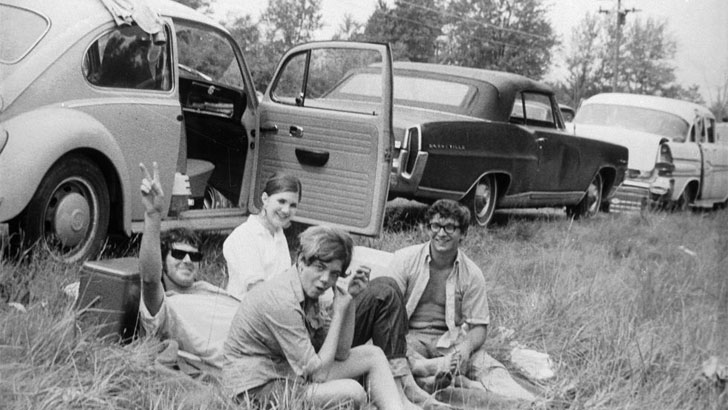 Gathered around their car at the Woodstock Music and Arts Fair, a group of friends share a moment of camaraderie. One of them extends a peace sign, a symbol of unity and peace that resonated strongly during the counterculture era. Their relaxed posture and friendly interaction capture the spirit of friendship and solidarity that thrived at Woodstock.
Gathered around their car at the Woodstock Music and Arts Fair, a group of friends share a moment of camaraderie. One of them extends a peace sign, a symbol of unity and peace that resonated strongly during the counterculture era. Their relaxed posture and friendly interaction capture the spirit of friendship and solidarity that thrived at Woodstock.
Wide Angle
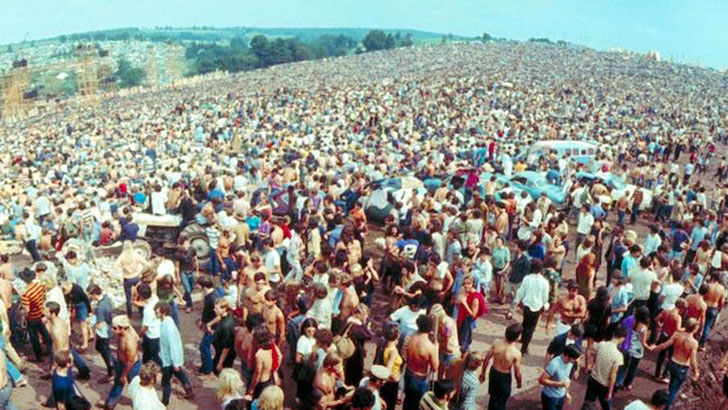 The wide-angle shot captures the awe-inspiring sight of a massive crowd stretching as far as the eye can see, all facing the distant stage at the Woodstock Music & Art Fair. The sheer scale of the gathering is overwhelming, with a sea of people congregating in anticipation of the performances to come. In this panoramic view, the collective energy and excitement of the crowd is palpable, reflecting the immense cultural significance and impact of the festival.
The wide-angle shot captures the awe-inspiring sight of a massive crowd stretching as far as the eye can see, all facing the distant stage at the Woodstock Music & Art Fair. The sheer scale of the gathering is overwhelming, with a sea of people congregating in anticipation of the performances to come. In this panoramic view, the collective energy and excitement of the crowd is palpable, reflecting the immense cultural significance and impact of the festival.
Hillside Setup
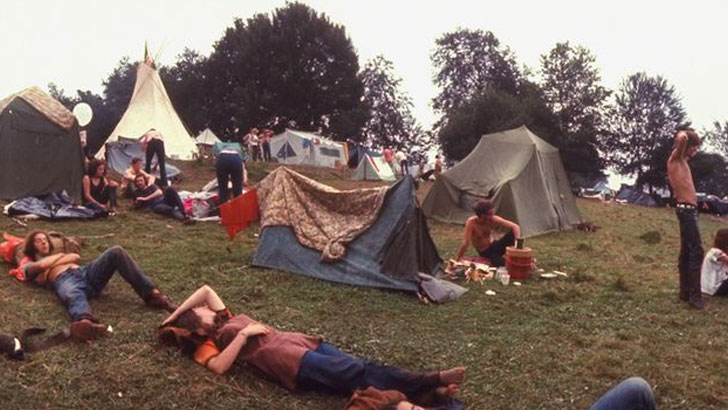 Nestled on a grassy hillside, young people create a vibrant tapestry of tents as they camp out during the Woodstock Music & Art Fair. The hillside becomes a colorful mosaic of temporary dwellings, each tent a small oasis of personal expression and respite. Amidst the rolling landscape, the air is filled with the sounds of laughter, conversation, and shared experiences, as these campers form a tight-knit community bonded by a love for music and a desire for collective celebration.
Nestled on a grassy hillside, young people create a vibrant tapestry of tents as they camp out during the Woodstock Music & Art Fair. The hillside becomes a colorful mosaic of temporary dwellings, each tent a small oasis of personal expression and respite. Amidst the rolling landscape, the air is filled with the sounds of laughter, conversation, and shared experiences, as these campers form a tight-knit community bonded by a love for music and a desire for collective celebration.
Working Up Appetites
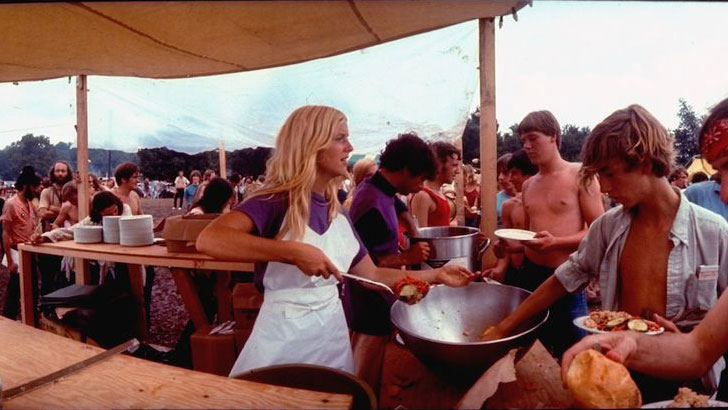 In a heartwarming scene at the Woodstock Music & Art Fair, a group of young people selflessly serve food to their fellow youths waiting in a food line. With compassion and generosity, they distribute nourishment and sustenance to those in need, embodying the spirit of communal care and support. Their actions exemplify the sense of unity and solidarity that prevailed at Woodstock, where people came together to help one another and create a nurturing environment amidst the celebration of music and culture.
In a heartwarming scene at the Woodstock Music & Art Fair, a group of young people selflessly serve food to their fellow youths waiting in a food line. With compassion and generosity, they distribute nourishment and sustenance to those in need, embodying the spirit of communal care and support. Their actions exemplify the sense of unity and solidarity that prevailed at Woodstock, where people came together to help one another and create a nurturing environment amidst the celebration of music and culture.
Smoking Club
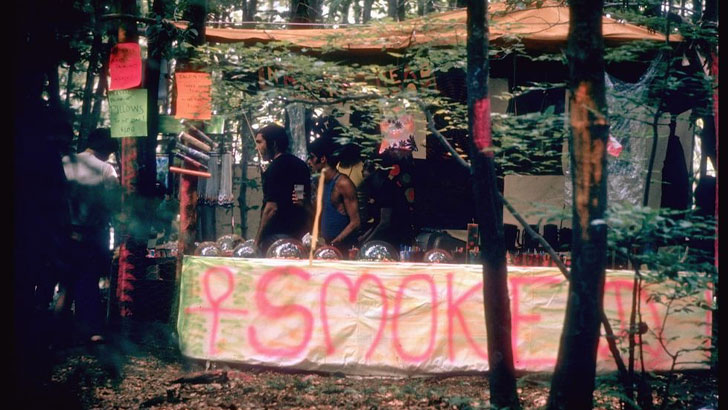 Nestled within the woods at the Woodstock Music & Art Fair, a stand emerges, adorned with an array of paraphernalia. Vibrant pillows, colorful posters, and fragrant incense captivate the attention of festival-goers, offering a glimpse into the countercultural aesthetics of the time. The stand becomes a haven for those seeking to enhance their Woodstock experience, providing a glimpse into the tapestry of art, expression, and alternative lifestyles that thrived during the festival. Amidst the natural beauty of the woods, this ephemeral marketplace adds another layer of intrigue and creativity to the immersive and transformative atmosphere of Woodstock.
Nestled within the woods at the Woodstock Music & Art Fair, a stand emerges, adorned with an array of paraphernalia. Vibrant pillows, colorful posters, and fragrant incense captivate the attention of festival-goers, offering a glimpse into the countercultural aesthetics of the time. The stand becomes a haven for those seeking to enhance their Woodstock experience, providing a glimpse into the tapestry of art, expression, and alternative lifestyles that thrived during the festival. Amidst the natural beauty of the woods, this ephemeral marketplace adds another layer of intrigue and creativity to the immersive and transformative atmosphere of Woodstock.
Lighting At Sunrise
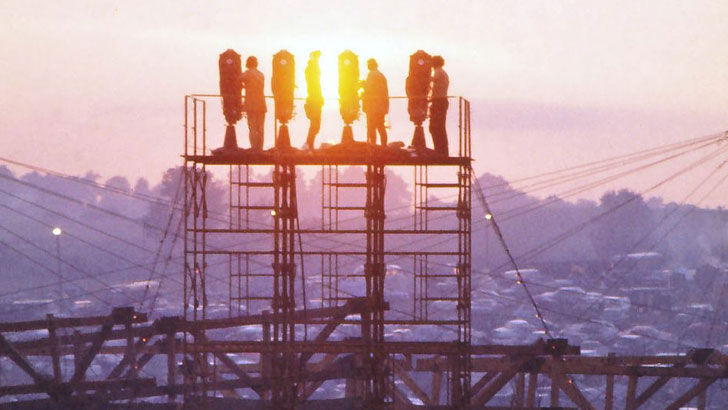 As the sun begins to rise on the 17th of August 1969, the lighting tower stands tall, casting its long shadow over the Woodstock Music Festival in New York. The soft golden hues of the sunrise illuminate the surroundings, creating a serene and captivating atmosphere. The tower, a symbol of the technical marvels behind the festival, becomes a silhouette against the sky, hinting at the incredible performances and shared moments that await as the day unfolds.
As the sun begins to rise on the 17th of August 1969, the lighting tower stands tall, casting its long shadow over the Woodstock Music Festival in New York. The soft golden hues of the sunrise illuminate the surroundings, creating a serene and captivating atmosphere. The tower, a symbol of the technical marvels behind the festival, becomes a silhouette against the sky, hinting at the incredible performances and shared moments that await as the day unfolds.
Laying Around
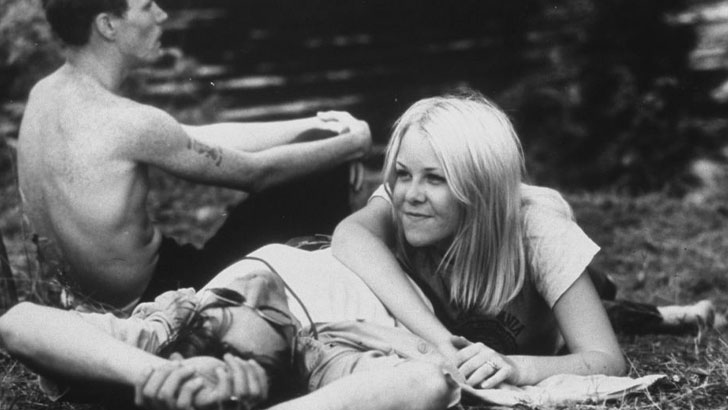 Amidst the lively ambiance of the Woodstock Music Festival, a young couple finds a moment of tranquility to unwind and relax. Embracing the festival spirit, they sit side by side, their faces reflecting a sense of contentment and peace. Surrounded by the sounds of music, laughter, and the collective energy of the crowd, they create a small oasis of calm amidst the joyful chaos.
Amidst the lively ambiance of the Woodstock Music Festival, a young couple finds a moment of tranquility to unwind and relax. Embracing the festival spirit, they sit side by side, their faces reflecting a sense of contentment and peace. Surrounded by the sounds of music, laughter, and the collective energy of the crowd, they create a small oasis of calm amidst the joyful chaos.
Improv Laundry
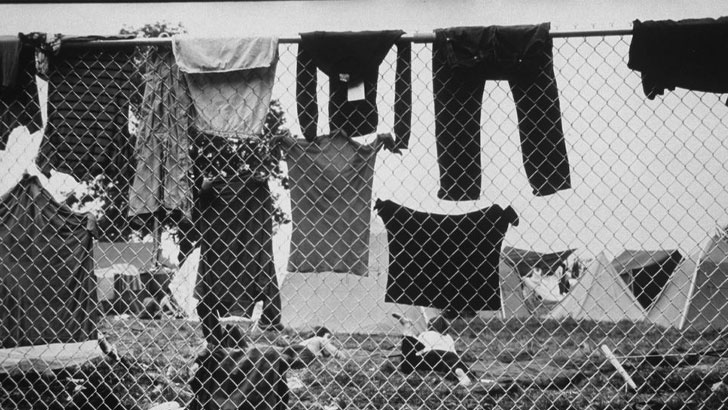 Against the backdrop of the Woodstock Music Festival, laundry flutters in the breeze, delicately hung on a fence. Shirts, dresses, and colorful garments create a whimsical display, showcasing the practical yet unconventional ways in which festival-goers attend to their everyday needs. The sight of laundry adorning the fence adds a touch of domesticity to the vibrant and carefree atmosphere of Woodstock, serving as a gentle reminder that even in the midst of a cultural event, the necessities of daily life continue.
Against the backdrop of the Woodstock Music Festival, laundry flutters in the breeze, delicately hung on a fence. Shirts, dresses, and colorful garments create a whimsical display, showcasing the practical yet unconventional ways in which festival-goers attend to their everyday needs. The sight of laundry adorning the fence adds a touch of domesticity to the vibrant and carefree atmosphere of Woodstock, serving as a gentle reminder that even in the midst of a cultural event, the necessities of daily life continue.
Sally Mann
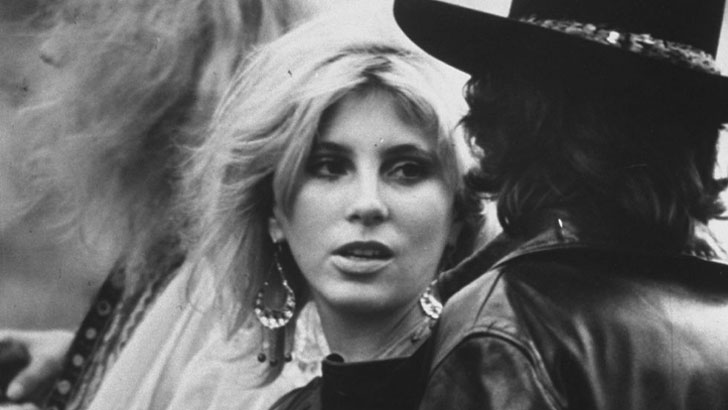 Renowned photographer Sally Mann captures a captivating moment at the Woodstock Music Festival. With her keen eye, she freezes a slice of time, immortalizing the essence of the event through her lens. Through her photographs, Mann expertly captures the spirit, energy, and raw emotions that permeate the festival grounds. Her presence at Woodstock enriches the visual narrative of this iconic event, offering a glimpse into the soul-stirring moments that unfolded during those transformative days.
Renowned photographer Sally Mann captures a captivating moment at the Woodstock Music Festival. With her keen eye, she freezes a slice of time, immortalizing the essence of the event through her lens. Through her photographs, Mann expertly captures the spirit, energy, and raw emotions that permeate the festival grounds. Her presence at Woodstock enriches the visual narrative of this iconic event, offering a glimpse into the soul-stirring moments that unfolded during those transformative days.
Meher Baba Tent
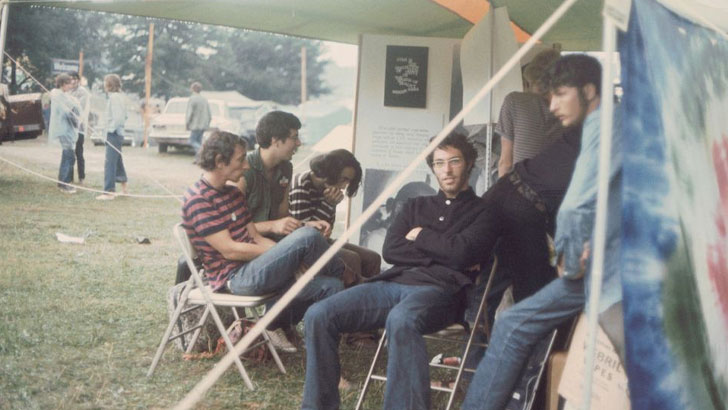 Inside the Meher Baba tent during the Woodstock Music and Arts Fair, a diverse gathering of festival-goers congregates. In this sacred space, individuals of various backgrounds come together, seeking solace and connection through the teachings and influence of Meher Baba, the late Indian mystic and spiritual leader. Against the backdrop of the festival, the Meher Baba tent serves as a sanctuary, offering a place for reflection, contemplation, and spiritual exploration. It stands as a testament to the enduring impact of Meher Baba’s teachings and the openness of the Woodstock community to embrace diverse spiritual and philosophical ideologies.
Inside the Meher Baba tent during the Woodstock Music and Arts Fair, a diverse gathering of festival-goers congregates. In this sacred space, individuals of various backgrounds come together, seeking solace and connection through the teachings and influence of Meher Baba, the late Indian mystic and spiritual leader. Against the backdrop of the festival, the Meher Baba tent serves as a sanctuary, offering a place for reflection, contemplation, and spiritual exploration. It stands as a testament to the enduring impact of Meher Baba’s teachings and the openness of the Woodstock community to embrace diverse spiritual and philosophical ideologies.
Rain Dance
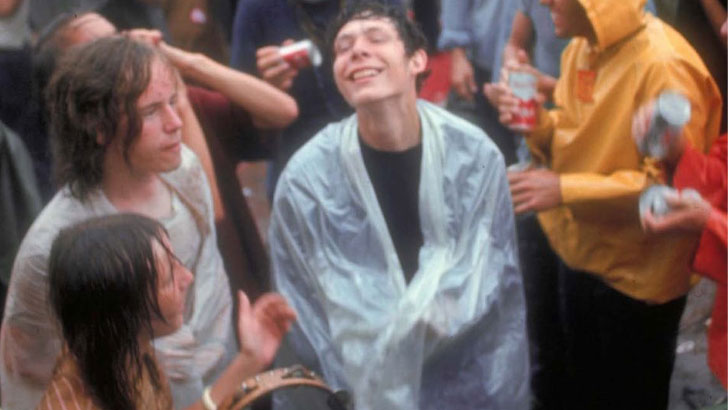 Undeterred by the rain, a resilient crowd gathers at the Woodstock Music & Art Festival, embracing the unpredictable weather with unwavering enthusiasm. Raindrops cascade down, adding a poetic backdrop to the collective experience of the attendees. In this moment, the shared camaraderie of the crowd shines through, as they come together, undaunted by the wet conditions, to revel in the music and celebration.
Undeterred by the rain, a resilient crowd gathers at the Woodstock Music & Art Festival, embracing the unpredictable weather with unwavering enthusiasm. Raindrops cascade down, adding a poetic backdrop to the collective experience of the attendees. In this moment, the shared camaraderie of the crowd shines through, as they come together, undaunted by the wet conditions, to revel in the music and celebration.
Media Station

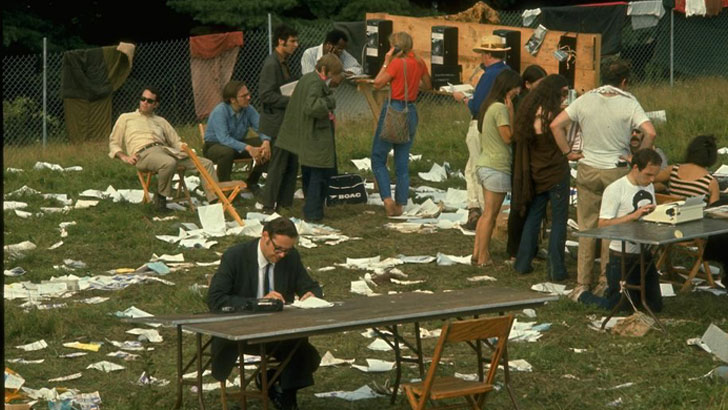 Amidst the bustling atmosphere of the Woodstock Music & Art Fair, a diverse group of individuals engage in various forms of communication. Some diligently write, capturing their experiences and reflections on paper. Others type away on typewriters, immersing themselves in creative expression. Meanwhile, conversations flow as people engage in animated phone calls, connecting with loved ones or sharing their experiences with the outside world. This scene captures the blend of introspection, creativity, and connectivity that defined Woodstock.
Amidst the bustling atmosphere of the Woodstock Music & Art Fair, a diverse group of individuals engage in various forms of communication. Some diligently write, capturing their experiences and reflections on paper. Others type away on typewriters, immersing themselves in creative expression. Meanwhile, conversations flow as people engage in animated phone calls, connecting with loved ones or sharing their experiences with the outside world. This scene captures the blend of introspection, creativity, and connectivity that defined Woodstock.
Watching Richie Havens
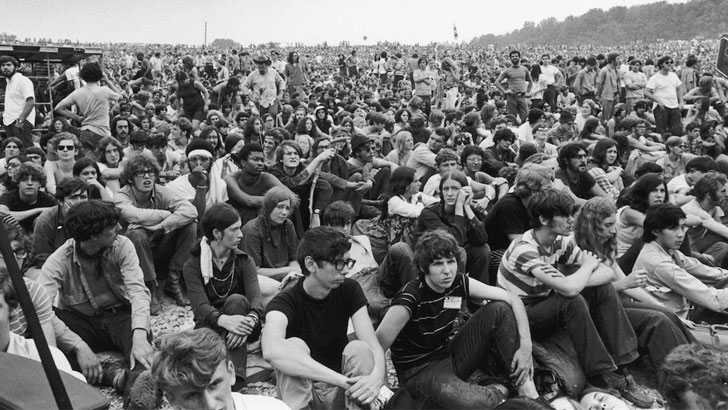 With anticipation in the air, fans eagerly gather to witness the historic opening of the Woodstock Music Festival, headlined by the talented Richie Havens. Their eyes fixed on the stage, they are captivated by Havens’ soulful performance, his voice resonating through the crowd, and his guitar strumming setting the tone for the extraordinary musical journey ahead. The audience becomes immersed in the moment, their faces reflecting a mix of excitement, awe, and appreciation for the incredible talent on display.
With anticipation in the air, fans eagerly gather to witness the historic opening of the Woodstock Music Festival, headlined by the talented Richie Havens. Their eyes fixed on the stage, they are captivated by Havens’ soulful performance, his voice resonating through the crowd, and his guitar strumming setting the tone for the extraordinary musical journey ahead. The audience becomes immersed in the moment, their faces reflecting a mix of excitement, awe, and appreciation for the incredible talent on display.
Couple’s Portrait
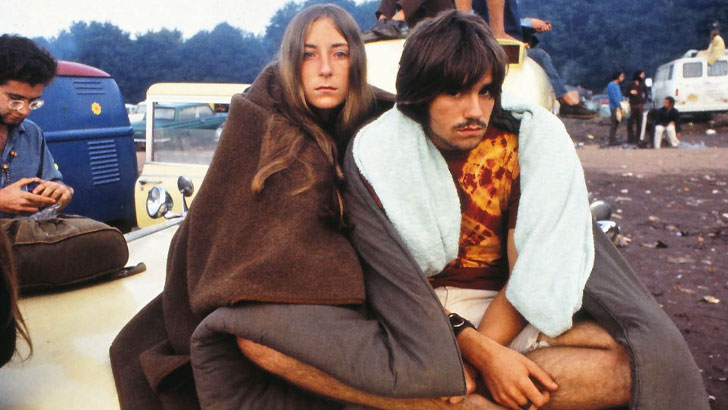 Amidst the vibrant energy of the Woodstock Music Festival, a young couple finds respite on top of a van. They sit closely together, their faces filled with a sense of serenity and connection amidst the bustling crowd. The van becomes their perch, offering a front-row seat to the unfolding spectacle of music, camaraderie, and cultural revolution.
Amidst the vibrant energy of the Woodstock Music Festival, a young couple finds respite on top of a van. They sit closely together, their faces filled with a sense of serenity and connection amidst the bustling crowd. The van becomes their perch, offering a front-row seat to the unfolding spectacle of music, camaraderie, and cultural revolution.
Main Stage Fisheye
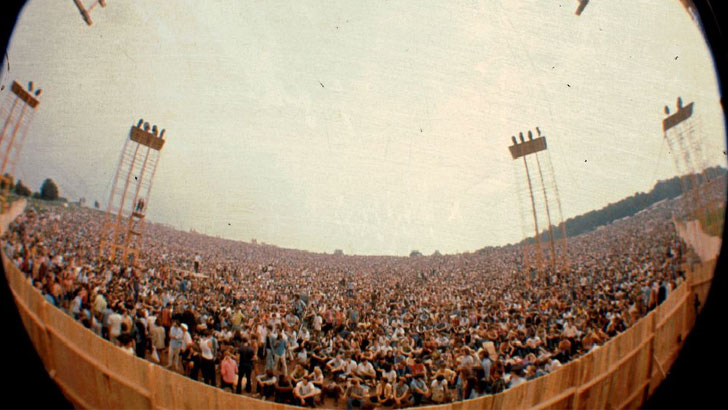 From the vantage point of the main stage at the Woodstock Music Festival, a sweeping view captures the immense sea of people that stretches as far as the eye can see. The crowd becomes a vibrant tapestry of humanity, a diverse mosaic of individuals united by their shared love for music and the spirit of peace and unity. In this panoramic scene, the vast gathering encapsulates the essence of Woodstock, where boundaries dissolve, and a sense of collective joy and togetherness prevails.
From the vantage point of the main stage at the Woodstock Music Festival, a sweeping view captures the immense sea of people that stretches as far as the eye can see. The crowd becomes a vibrant tapestry of humanity, a diverse mosaic of individuals united by their shared love for music and the spirit of peace and unity. In this panoramic scene, the vast gathering encapsulates the essence of Woodstock, where boundaries dissolve, and a sense of collective joy and togetherness prevails.
Different Paths
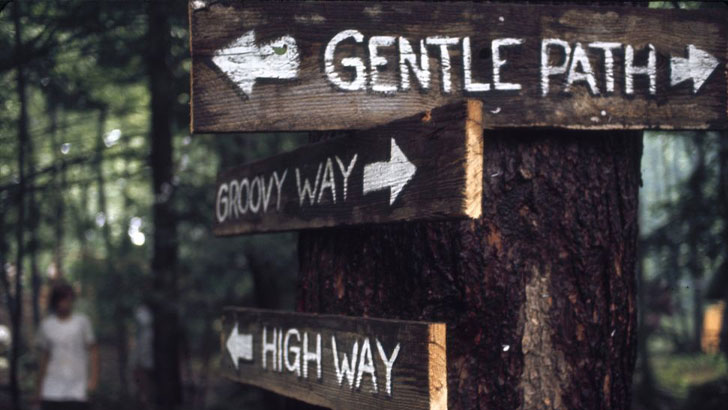 Amidst the bustling atmosphere of the Woodstock Music and Arts Fair, hand-painted signs emerge as beacons, guiding the foot traffic of the festival-goers. Vibrant and expressive, these signs serve as whimsical markers, leading the way through the vast grounds of the event. Each stroke of paint and carefully crafted arrow adds to the sense of adventure and discovery, contributing to the unique visual landscape of Woodstock.
Amidst the bustling atmosphere of the Woodstock Music and Arts Fair, hand-painted signs emerge as beacons, guiding the foot traffic of the festival-goers. Vibrant and expressive, these signs serve as whimsical markers, leading the way through the vast grounds of the event. Each stroke of paint and carefully crafted arrow adds to the sense of adventure and discovery, contributing to the unique visual landscape of Woodstock.
Handy Umbrella
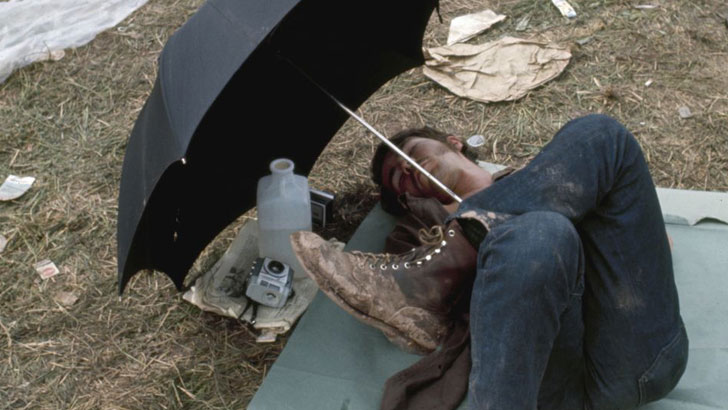 Amidst the lively ambiance of the Woodstock Music and Arts Fair, an unidentified young man finds solace and respite beneath a cluster of umbrellas, peacefully slumbering on the ground. The vibrant colors and patterns of the umbrellas create a striking contrast against the grassy surroundings, adding a touch of whimsy to the scene. In the midst of the festival’s bustling energy, this quiet moment encapsulates the need for rest and rejuvenation amidst the immersive and exhilarating experience of Woodstock.
Amidst the lively ambiance of the Woodstock Music and Arts Fair, an unidentified young man finds solace and respite beneath a cluster of umbrellas, peacefully slumbering on the ground. The vibrant colors and patterns of the umbrellas create a striking contrast against the grassy surroundings, adding a touch of whimsy to the scene. In the midst of the festival’s bustling energy, this quiet moment encapsulates the need for rest and rejuvenation amidst the immersive and exhilarating experience of Woodstock.
Volunteer Kitchens
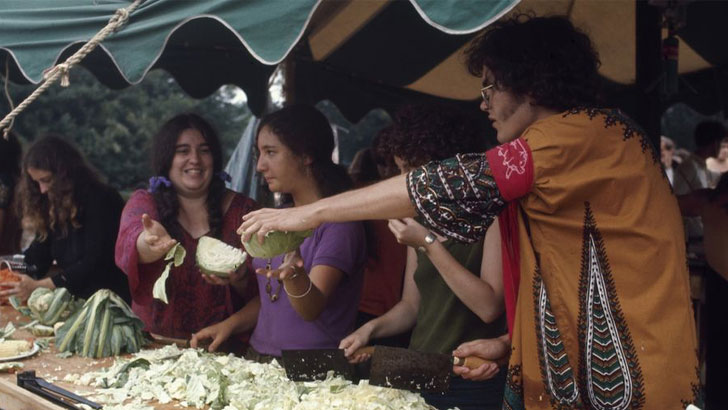 Amidst the bustling energy of Woodstock in Bethel, New York, a dedicated group of volunteers comes together to prepare food for the hungry attendees. With sleeves rolled up and a shared sense of purpose, they work tirelessly to feed the masses, embodying the communal spirit that defined the festival. Cooking utensils clatter, laughter fills the air, and the aroma of nourishing meals wafts through the makeshift kitchen. These selfless individuals become the backbone of sustenance, ensuring that all can enjoy the festival experience while being nourished in body and spirit.
Amidst the bustling energy of Woodstock in Bethel, New York, a dedicated group of volunteers comes together to prepare food for the hungry attendees. With sleeves rolled up and a shared sense of purpose, they work tirelessly to feed the masses, embodying the communal spirit that defined the festival. Cooking utensils clatter, laughter fills the air, and the aroma of nourishing meals wafts through the makeshift kitchen. These selfless individuals become the backbone of sustenance, ensuring that all can enjoy the festival experience while being nourished in body and spirit.
More From Auto Overload
-


The Incredible Story of Elon Musk
-
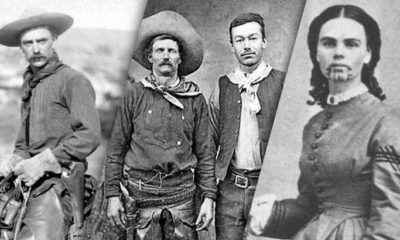

Epic Photos From The Historic Wild West
-


Every Day Items In Low Supply
-
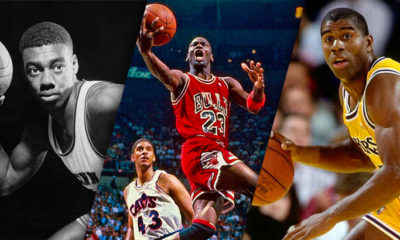

The Greatest NBA Players Of All Time – Ranked
-


The Highest Paid Female News Anchors
-
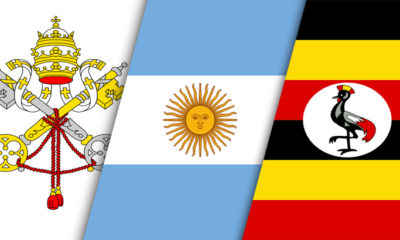

Can You Identify These Country Flags?
-


Mighty Military Vehicles in the World Today
-


Historical Photographs Captured During The Vietnam War
-
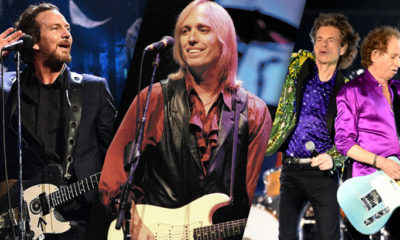

The Greatest Bands of All Time – Ranked
-
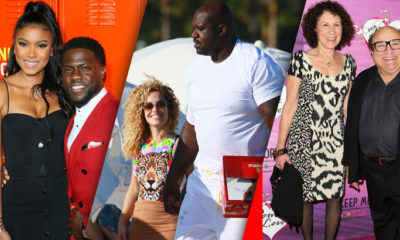

Celebrity Couple Height Differences
-


Hilarious Moments That Sum Up Office Life
-
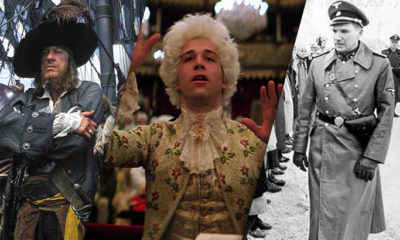

Worst Costume Errors In Movie History
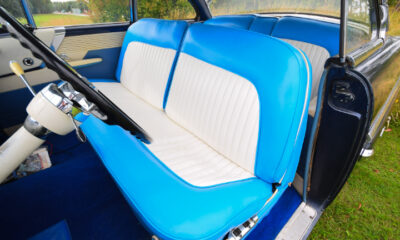

6 Popular Car Features That Will Never Be Seen Again
Venturing into the market for a new car after some time can be overwhelming, given the rapid advancements in vehicle...


6 Best High Mileage Motor Oils On The Market
As vehicles age and accumulate miles, the demand for high-mileage motor oils grows significantly. These specialized lubricants are formulated to...


8 Easy Ways To Increase Your Car’s Value
If you’ve been contemplating selling or trading in your car, there are simple yet effective ways to enhance its value...


10 Common Car Problems Every Driver Should Be Aware Of
While many of us rely on our cars for daily transportation, we often do so without fully understanding the subtle...

